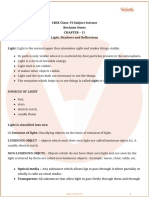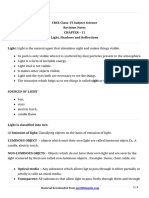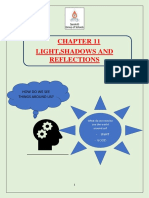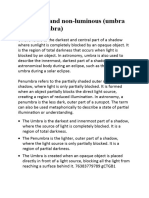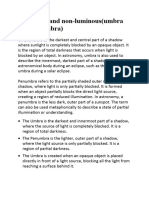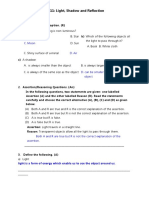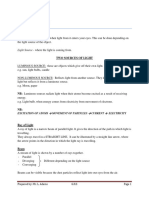0% found this document useful (0 votes)
33 views2 pagesClass6 Science CH 11 Light Shadow and Reflections
Chapter 11 discusses the nature of light, classifying it into luminous and non-luminous objects, and further categorizing materials as transparent, translucent, or opaque. It explains the formation of shadows, including types such as umbra and penumbra, and describes eclipses as shadows in space affecting the visibility of the sun and moon. The chapter also covers the reflection of light, highlighting silver as an effective reflector.
Uploaded by
E PointCopyright
© © All Rights Reserved
We take content rights seriously. If you suspect this is your content, claim it here.
Available Formats
Download as PDF, TXT or read online on Scribd
0% found this document useful (0 votes)
33 views2 pagesClass6 Science CH 11 Light Shadow and Reflections
Chapter 11 discusses the nature of light, classifying it into luminous and non-luminous objects, and further categorizing materials as transparent, translucent, or opaque. It explains the formation of shadows, including types such as umbra and penumbra, and describes eclipses as shadows in space affecting the visibility of the sun and moon. The chapter also covers the reflection of light, highlighting silver as an effective reflector.
Uploaded by
E PointCopyright
© © All Rights Reserved
We take content rights seriously. If you suspect this is your content, claim it here.
Available Formats
Download as PDF, TXT or read online on Scribd
/ 2




